What’s the Story? 5 Ways to Make Better Street Photos
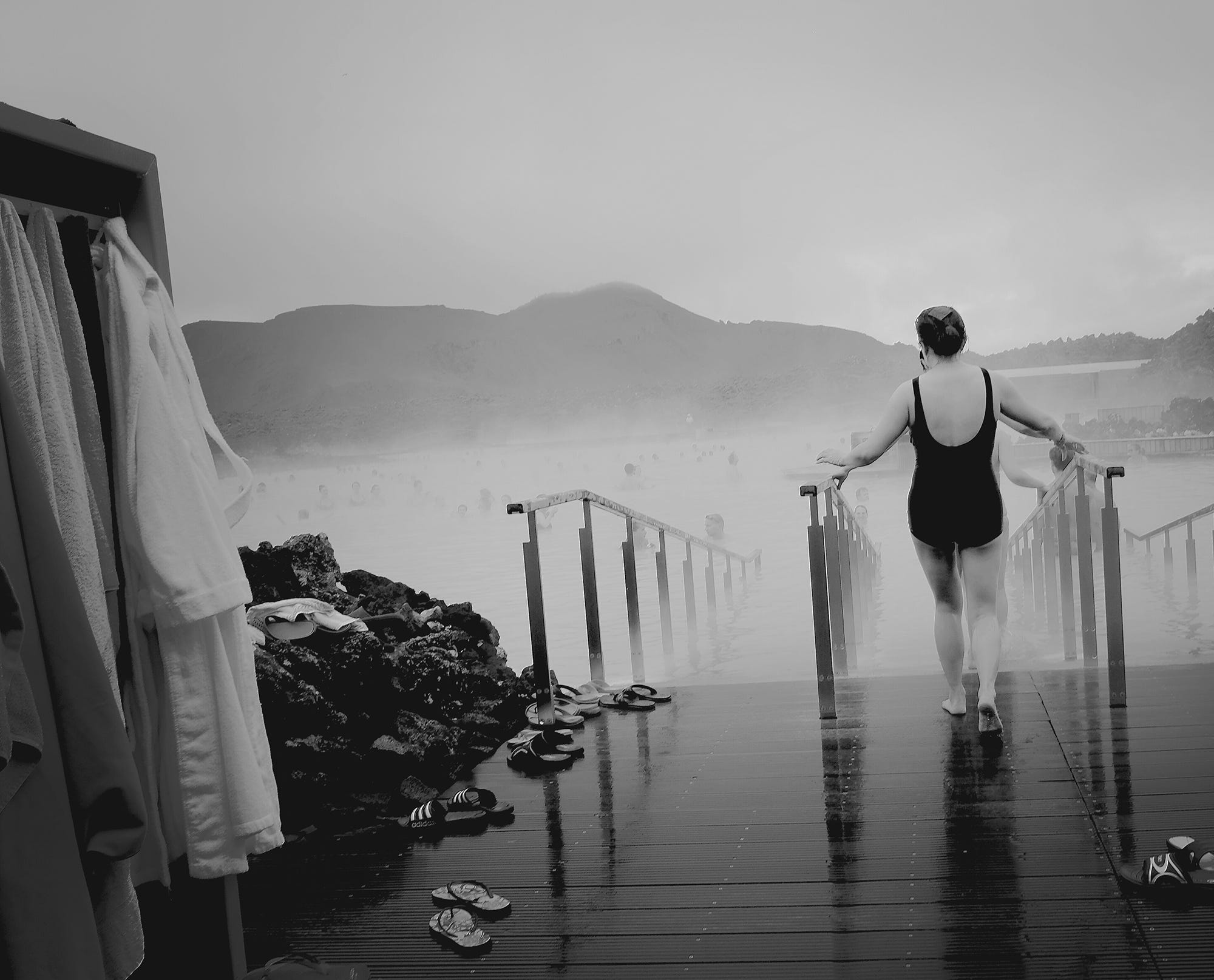
Street photography is an addictive calling — the more you do it, the more you want to do it — you crave more people, more places, more action. And it’s one of the most dynamic and exciting types of photography to share on social media, with an active community around the world. Here are some quick tips to take your street shooting and editing to the next level.
Taking the shot
1. Get to know your light.
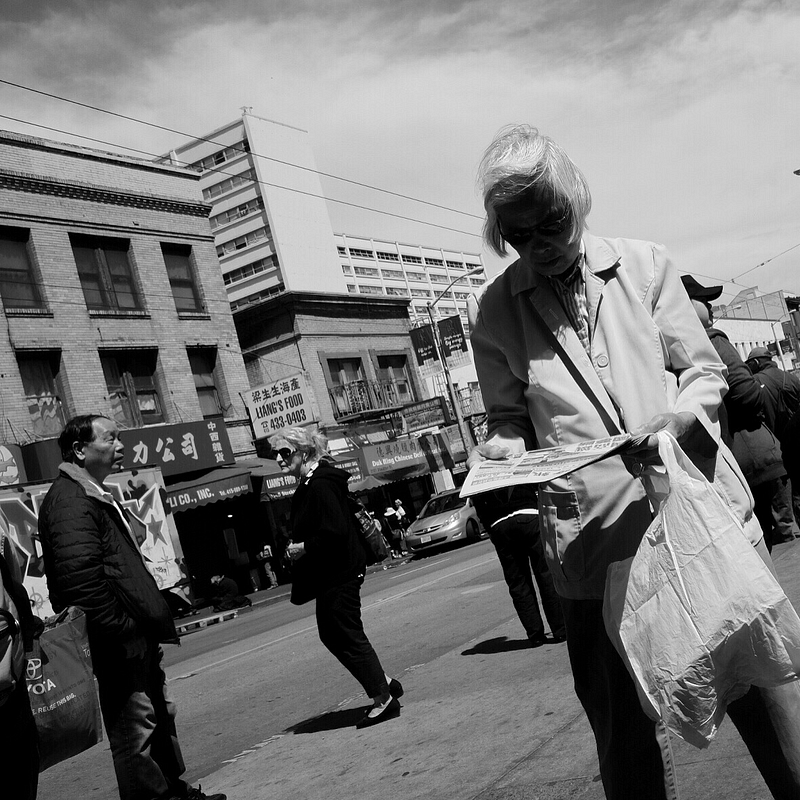
Where is east and where is west where you live? What time of day is it? Pay close attention to where tall buildings casting shadows are and where there are streetlamps or neon signs at night. Which way are your subjects walking? A subject walking toward the light makes the difference between a striking portrait and a lackluster scene. When you find a great location, think about what time of day would be absolutely perfect for your bright or “noir” shot, then return at that time of day. Become obsessive about this. Learn your city and your landscape.
Making the shot
Here are some ways to power up your photo editing — that help to hone your instincts to get a better shot in the first place.
2. Find the story and hold yourself to it.
Is it about color? Is it about angles and lines? Is it about the expression on a single person’s face? Is it a personal portrait, or is it the story of a whole street scene? Is it about how small humans are next to tall buildings, or how wide and vast the scene? What is it about? Tell yourself out loud: This is about… the look on the dog’s face, the way she’s holding that lipstick, how big Manhattan is, how empty the beach is, how fast the child is running, how many crazy colors and people there are at the carnival. Before you tap the first tool on your editing app, decide what the strength or story of your photo is, then keep it in mind as you edit and make that shine.
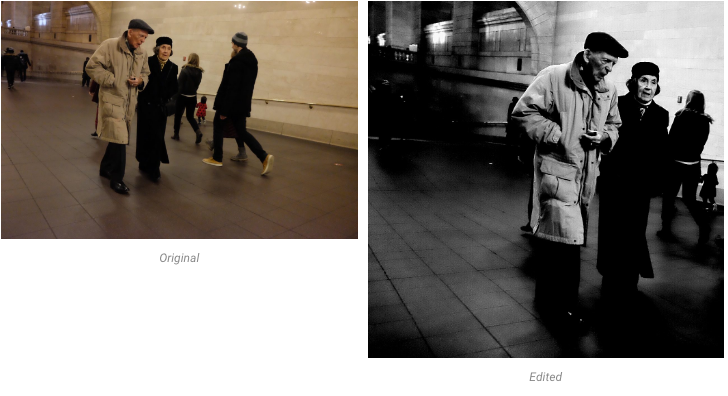
3. Color or black and white? Be intentional.
If you’ve decided that the story is about lines and shadows, or a facial expression or movement, then black & white may help you isolate that aspect. Think about how much noise you want or don’t want. Color can distract from the story you want to tell, or it can *be* the story — how green the grass is, how electric the night is, how loud the concert is, how vibrant the first day of summer in the city is. You may always publish in one or the other, but even so — make sure they are playing to their strengths.
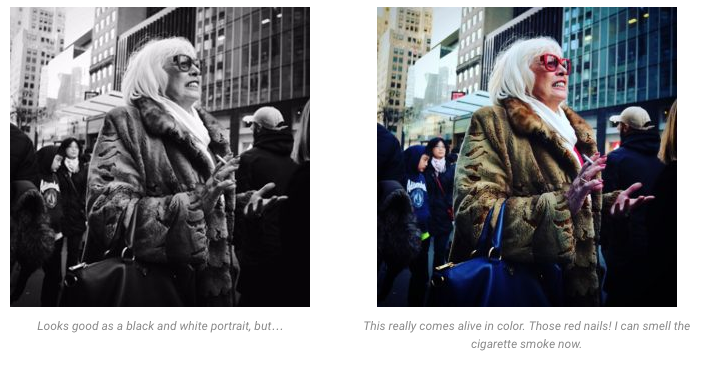
4. Color photo? Edit in black and white first.
This is a bit like the advice to writers to either write sober and edit drunk, or vice-versa. It’s about using the lenses of different states to see things in a new way. View your color shot in black and white before you crop it — you will immediately see noisy elements that distract from your story. Cropping is the main thing here, but you may also play with shadow and vignetting etc to get a true feel for what the strongest possible version of your photo is. Trust me that this will lead to better final color photos.
Extra credit: Practice shooting in black and white. Make it a setting on your DSLR or shoot with the b&w filter on on your iPhone. The world will look different and your instinct for great composition will improve. I recently starting shooting directly in b&w, and I find that it takes care of most of what I would’ve edited later.
Example: There are at least two ways to crop this — horizontal or square. Viewing this in black and white, I decided the story I wanted here was the man’s expression, and went with a more intimate vignette approach rather than a letterbox contrast story.
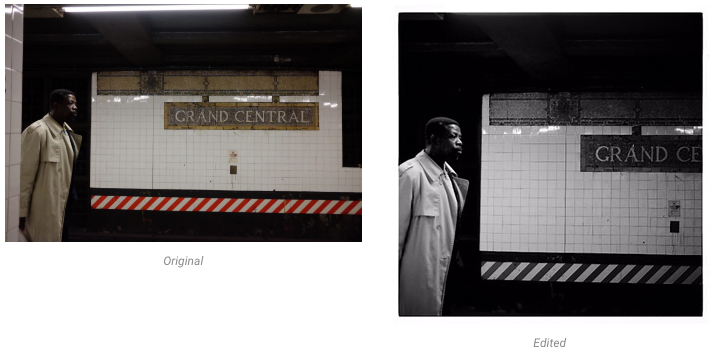
5. Make yourself gasp.
Pretend you’ve never seen your photo before — you may have to put it away for a few hours or days to do this. Imagine you have no emotional attachment to that day or moment or how hard it was to get the shot, and that you are seeing it for the first time. Do you love it, hate it, feel anything at all? Do you have an immediate emotional response to it, or do you have to study it or think about it to “get” it? Be ruthless with yourself. Don’t make your viewer work to see the story — make it easy. Do a gut check. Surprise and delight yourself.
Example: This was a random test shot that only came alive to me in black and white. Suddenly… it transported me. It’s not my usual type of photo. I edited this while I still had the beach sand on my boots, but the final edit looks like a strange dream and continues to feel new and magic whenever I see it.
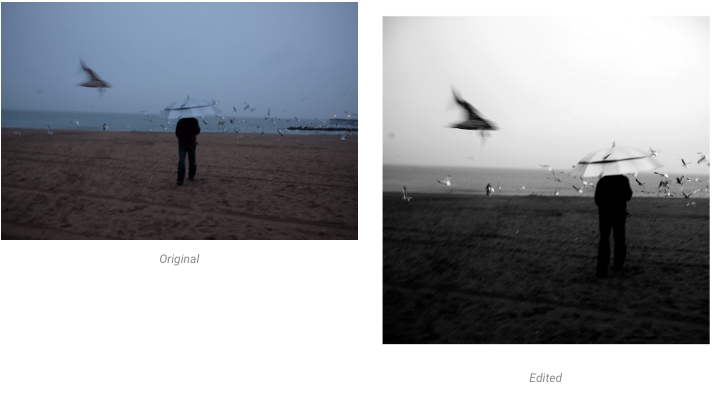
Let your stories tell themselves
Train your eye to find what is essential in your photo and to strip out anything that distracts from its power. Like a sculptor or writer, don’t be afraid to “kill your darlings” or chip away excess. Make every detail earn its place in your work, spotlight the strengths, and let your stories tell themselves.
…
Contact me or see more of my photography on Instagram and Facebook.